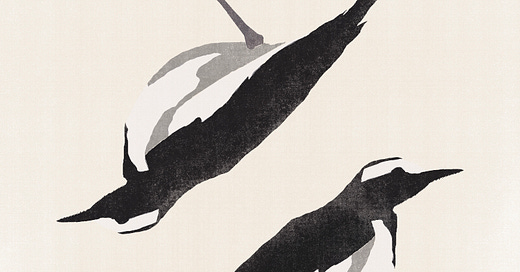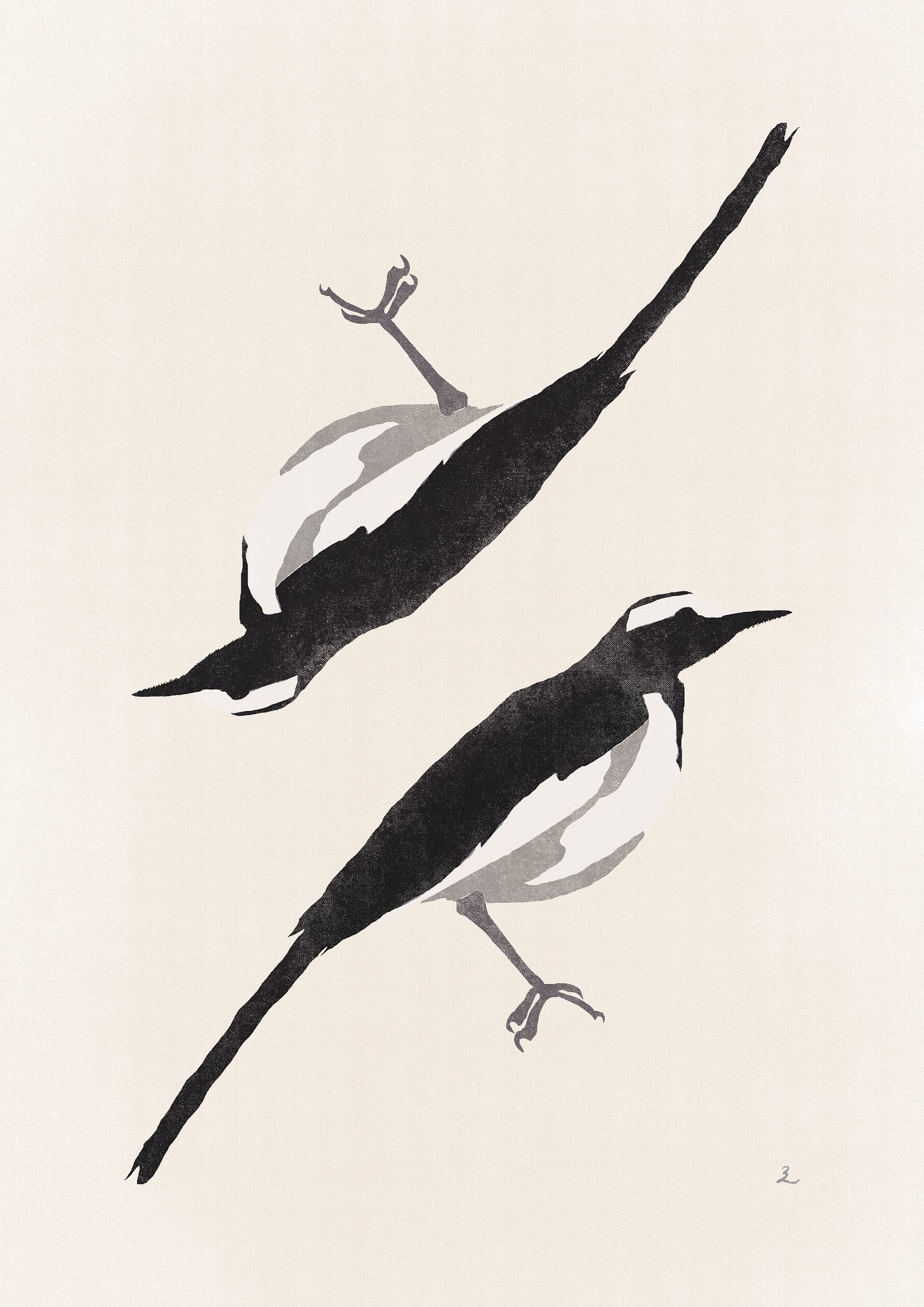The season of the rice harvest has begun! Down the road, farmers are cutting their crops of rice and leaving behind perfect foraging ground for Japanese Wagtails.
Latin name: Montacilla grandis | Japanese Name: セグロセキレイ (seguro sekirei)
Size: 21–23cm
Location: Japanese Wagtails live year-round throughout Japan and South Korea.
Habitat: You’ll find them along rivers, lakes, and ricefields.
Diet: They hunt for food on the ground and in shallow water, pecking around for arthropods, flies, aquatic insects, and sometimes small fish.
Homelife dynamics: In winter, they form large communal roosts in reedbeds by rivers or in trees by roads. Males and females defend their territory quite aggressively, chasing off birds that loiter too close.
The Wagtail in Ainu Folklore
The Ainu are an indigenous people group who live in Hokkaido (the northern region of Japan). They have their own distinct language and culture that has become endangered in recent history. Since at least the 18th century, they have had a difficult relationship with mainland Japanese people who colonized their traditional lands and forced cultural assimilation. Only recently in 2019 were they legally recognized as an indigenous people group by the Japanese government.
Despite this ugly history, they have continued to preserve beautiful traditions and stories. When researching the Japanese Wagtail, we came across one Ainu origin story in which the bird is the starring character. In the beginning, the story goes, the world was an uninhabitable quagmire. Determined to change this, god sent down a wagtail from heaven who got busy fluttering over the swamp, trampling the mud with its feet, and beating it down with its wagging tail until the earth began to appear out of the surrounding waters. The Ainu call the earth moshiri (meaning “floating earth”) for this reason.
I love looking at the wagtail today and making the same observations the Ainu storytellers must have made thousands of years ago to create this narrative.
For this post, we consulted Cornell Lab, an article from BBC, and an article accessed in JSTOR.








I absolutely concur with your love of the origin folklore story of the Japanese Wagtail. Incredible art to go with it too!